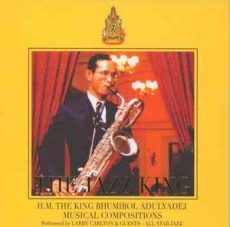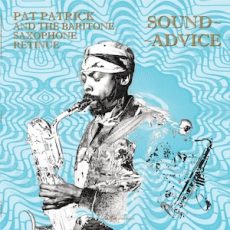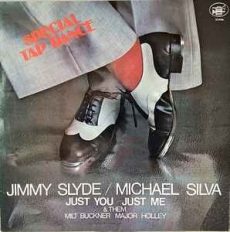
Daily Dose Of Jazz…
Rosemary Squires was born Joan Rosemary Yarrow on December 7, 1928 in Bristol, England. She took singing, guitar and piano lessons while at school at St Edmund’s Girls’ School in Salisbury, Wiltshire, England. Initially she entertained troops by singing on nearby UK and US Army bases around Salisbury. While maintaining a job in an antique book shop and office work, she sang with various groups and a Polish military band
Becaming a professional singer in 1940 Rosemary’s introduction was on the BBC Home Service’s Children’s Hour. She performed with the big bands of Ted Heath, Geraldo and Cyril Stapleton. She sang with the smaller jazz bands of Max Harris, Kenny Baker and the Alan Clare band. Moving from Salisbury to London in 1948 when she was twenty, by the 1950s and Sixties, she became a regular on the BBC Light Programme such as Melody Time and Workers’ Playtime.
She worked in the United States with Danny Kaye and Sammy Davis Jr., as well as appearing on the Johnny Carson Show. She would go on to perform for Prince Edward, and toured twice countrywide during the 2012 Royal Diamond Jubilee.
Jazz, big band, cabaret and concert singer and recording artist Rosemary Squires, who was president of the Studio Theatre is Salisbury and was made a Member of the Order of the British Empire, died on August 8, 2023 at the age of 94.
More Posts: bandleader,history,instrumental,jazz,music,vocal

Daily Dose Of Jazz…
Bhumibol Adulyadej was born on December 5, 1927 in Cambridge, Massachusetts, however, the family moved to Bangkok, Thailand where she briefly attended Mater Dei school. In 1933 his mother took the family to Switzerland, where he continued his education at the École nouvelle de la Suisse romande in Lausanne. In 1934 he was given his first camera, which ignited his lifelong enthusiasm for photography.
Before he became King of Thailand, titled Rama IX, in 1942, Bhumibol became a jazz enthusiast, and started to play the saxophone, a passion that he kept throughout his life. He received his high-school diploma with a major in French literature, Latin, and Greek from the Gymnase Classique Cantonal de Lausanne, and by 1945 had begun studying sciences at the University of Lausanne, when World War II ended and the family was able to return to Thailand.
Adulyadej became an accomplished jazz baritone saxophone player and composer, playing Dixieland and New Orleans jazz. He also played the clarinet, trumpet, guitar, and piano. It is widely believed that his father may have inspired his passion for artistic pursuits at an early age. Initially focusing on classical music exclusively for two years but eventually switched to jazz since it allowed him to improvise more freely. It was during this time that he decided to specialize in wind instruments, especially the saxophone and clarinet. By 18 he started composing his own music with the first being Candlelight Blues.
He continued to compose even during his reign following his coronation in 1946. Bhumibol performed with Preservation Hall Jazz Band, Benny Goodman, Stan Getz, Lionel Hampton, and Benny Carter. Throughout his life, Bhumibol wrote a total of 49 compositions, much of it is jazz swing but he also composed marches, waltzes, and Thai patriotic songs.
He initially received general music training privately while he was studying in Switzerland, but his older brother, then King Ananda Mahidol, who had bought a saxophone, sent Bhumibol in his place. King Ananda would later join him on the clarinet. On his permanent return to Thailand in 1950, he started a jazz band, Lay Kram, whom he performed with on a radio station he started at his palace. The band grew, being renamed the Au Sau Wan Suk Band and he performed with them live on Friday evenings, occasionally taking telephoned requests.
Many bands such as Les Brown and His Band of Renown, Claude Bolling Big Band, and Preservation Hall Jazz Band recorded some of his compositions and can still be heard in Thailand. A 1996 documentary, Gitarajan, was made about his music. Adulyadej still played music with his Au Sau Wan Suk Band in later years, but was rarely heard in public. In 1964, Bhumibol became the 23rd person to receive the Certificate of Bestowal of Honorary Membership on behalf of Vienna’s University of Music and Performing Arts.
Baritone saxophonist, clarinetist, trumpeter, guitarist, pianist and composer and King Bhumibol Adulyadej, who reigned for 70 years and 126 days and is the longest of any Thai monarch, died on October 13, 2016 in Bangkok, Thailand.
More Posts: bandleader,clarinet,composer,guitar,history,instrumental,jazz,music,piano,saxophone,trumpet

Daily Dose Of Jazz…
Rusty Bryant was born Royal Gordon Bryant on November 25, 1929 in Huntington, West Virginia and grew up in Columbus, Ohio where he became a fixture of the local jazz scene.
He worked with Tiny Grimes and Stomp Gordon before founding his own ensemble, the Carolyn Club Band in 1951. Signing with Dot Records in 1954 Rusty released several albums as a leader in the second half of the 1950s. In 1953, his live recording All Nite Long which was a faster version of Night Train, became a hit R&B single in the U.S.
With his Dot contract ending in 1957 he returned to Columbus to do mostly local engagements, playing often with pianist-organist Hank Marr and a young Nancy Wilson also sang in his group. It was not until his appearance on the 1968 Groove Holmes album That Healin’ Feelin’ that he resurfaced beyond regional acclaim, and soon after he began leading dates for Prestige Records.
Bryant recorded extensively for the label from 1969 through the middle of the 1970s, being a sideman with Ivan “Boogaloo Joe” Jones, Johnny “Hammond” Smith, Charles Kynard, and Sonny Phillips. His 1970 release Soul Liberation was his most commercially successful, reaching No. 35 on the U.S. Black Albums chart and No. 15 on the Top Jazz Albums chart.
Tenor and alto saxophonist Rusty Bryant, who recorded into the early 1980s before returning to Columbus and played mostly local dates, died on March 25, 1991.
More Posts: bandleader,history,instrumental,jazz,music,saxophone

Daily Dose Of Jazz…
Pat Patrick was born Laurdine Kenneth Patrick Jr. on November 23, 1929 in East Moline, Illinois, to Laverne and Laurdine Kenneth Patrick. He first learned piano, drums, and trumpet as a child, and then switched to saxophones. He attended and studied music at DuSable High School in Chicago, Illinois where he met fellow students and future musicians bassist Richard Davis and saxophonists John Gilmore and Clifford Jordan. While still in school he was baritone saxophonist for the Regal Theater’s house band.
1949 saw Pat enrolled at Florida Agricultural and Mechanical University, but soon returned to Chicago to study at Wilson Junior College. Around 1950 he first played in one of Sun Ra’s bands as part of a trio and occasionally in Sun Ra’s Arkestra. By 1954 he became a regular member of the band. He moved to New York City in 1961, spent several years in the Arkestra’s communal residences in the East Village and Philadelphia, Pennsylvania.
He went on to play and record with John Coltrane, Blue Mitchell, Mongo Santamaría, Thelonious Monk, and Babatunde Olatunji. In 1972, Patrick co-founded the Baritone Saxophone Retinue, which featured Charles Davis and recorded two albums for Saturn Records.
He toured Europe with Sun Ra in 1970 and 1976, and was part of some other Arkestra performances in that decade, but he also devoted time to teaching at the State University of New York at Old Westbury.>
Baritone and alto saxophonist, bassist, flutist, percussionist and composer Pat Patrick, who is known for his 40-year association with Sun Ra, died from leukemia in Moline on December 31, 1991.
More Posts: bandleader,bass,composer,flute,history,instrumental,jazz,music,percussion,saxophone

Daily Dose Of Jazz…
Michael Silva was born on November 12, 1925 in New York City, New York. After World War II he worked with Hot Lips Page, Milt Buckner Trio, the Robert Mavounzy Quintette and others. For a decade beginning in 1958 he was a member of Sammy Davis Jr.’s band.
In 1971 he settled in Paris, France where he recorded two albums with Ralph Sutton. Drummer Michael Silva died on March 8, 1990.
More Posts: bandleader,drums,history,instrumental,jazz,music



